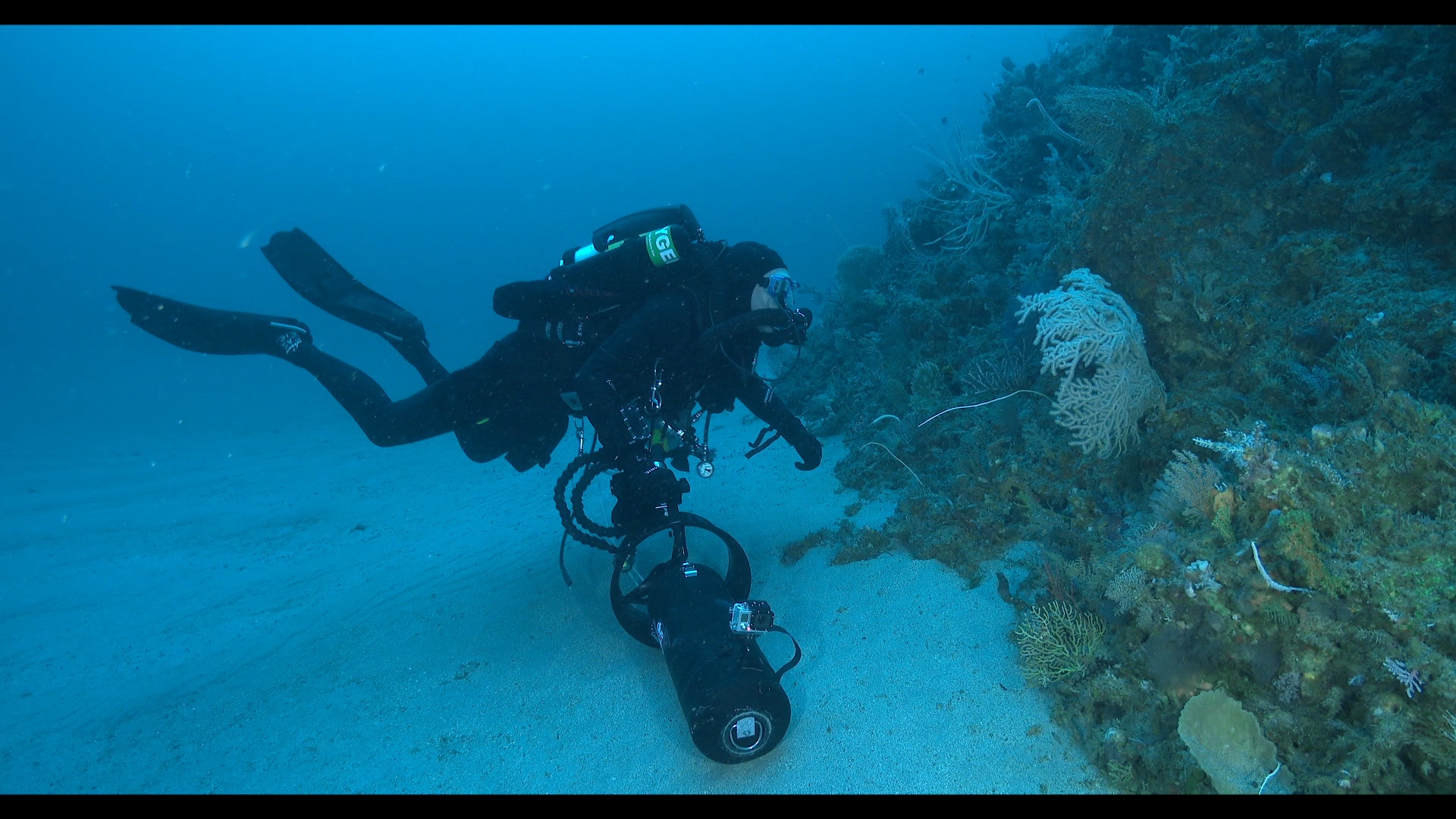
Deep beneath the ocean’s surface lies a mysterious region known as the “twilight zone.” At 50 to 150 meters (200 to 500 feet) deep, this part of the ocean receives very little light, mimicking twilight — the time of day just after sunset. Some parts of the twilight zone (or mesophotic zone, as it’s known in scientific circles) are vast ocean space, but others are home to incredible coral reefs.
Scientists have many unanswered questions about the twilight zone, in part because it is so hard to reach. Diving to this region requires specialized training and gear, and it takes hours to safely return to the surface after each dive. Bart Shepherd and Luiz Rocha, of the California Academy of Sciences, are among a group of scientists lucky enough to be able to dive and explore these depths.
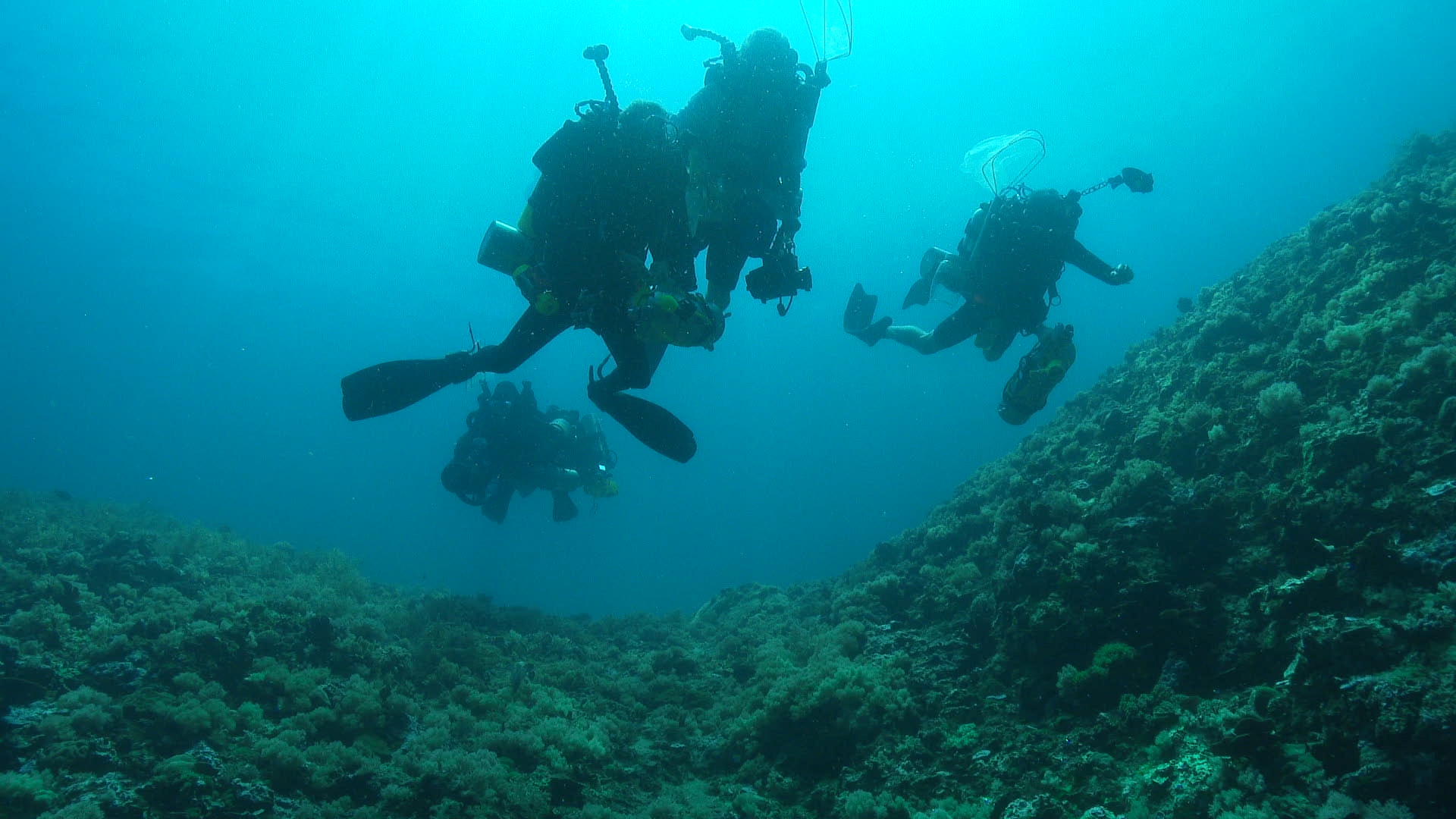
“More people have been to the surface of the moon than have been to these reefs,” says Shepherd, director of the Academy’s Steinhart Aquarium.
“Everywhere we go about half of the fish are not known. They don’t have a scientific name. The other half we didn’t know that they went that deep. So, these are all new records, either new records of depth extensions or range extensions or new species,” says Rocha, curator of ichthyology at the Academy.
The scientists are studying the twilight zone to learn about the biodiversity of this region and the greater role it plays in the health of the ocean ecosystem. “You know, one of the great questions that we still have is what are the connections between the shallow reefs and these twilight zone reefs? And that’s really why we are studying it, and that’s really why we continue to go and look there,” explains Shepherd.
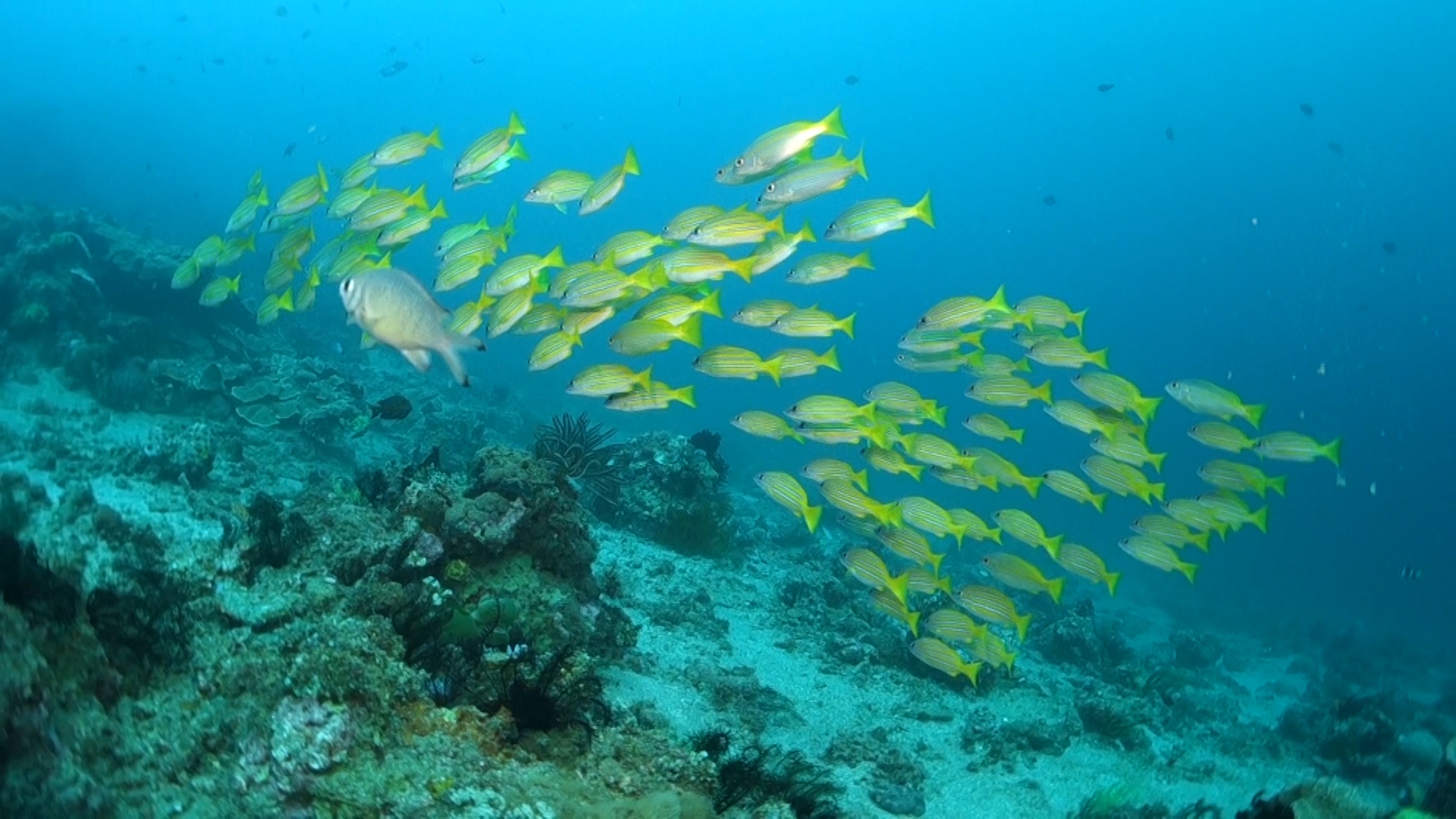
As part of their research, Shepherd and Rocha wanted to collect live fish of newly discovered species in order to study their behavior. They also wanted to display the fish in the aquarium for the public to see. However, the researchers ran into a problem. They knew that if they tried to bring fish up from that depth, the fish could die.
Pressure is higher the deeper you go in the ocean, and fish living in the twilight zone are specially adapted to live at high pressures. Many fish have a swim bladder, a gas-filled organ that helps them maintain buoyancy. Bringing fish to the surface quickly exposes them to lower pressures, which causes the volume of the gases inside their swim bladder to expand. The swim bladder can balloon up and crush other vital organs inside the fish.
How, then, can scientists safely collect these fish and bring them to the surface? The researchers at the California Academy of Sciences engineered a way.
Scientists at the California Academy of Sciences have engineered a device that safely transports fish from the ocean's twilight zone to the surface. Having trouble viewing the video? Download or stream it on PBS Learning Media.
Figuring out a solution to this problem required a team effort. Matt Wandell, a biologist at the Steinhart Aquarium, was a key player in designing a device that allows fish to be brought up safely. “I had started to hear about the idea of the California Academy of Sciences going down and exploring deep under the ocean with divers, and possibly collecting fish down there. And since my job is to make sure that those fish come back healthy, I thought about different ways that we could make sure that they could handle that pressure change,” explains Wandell.
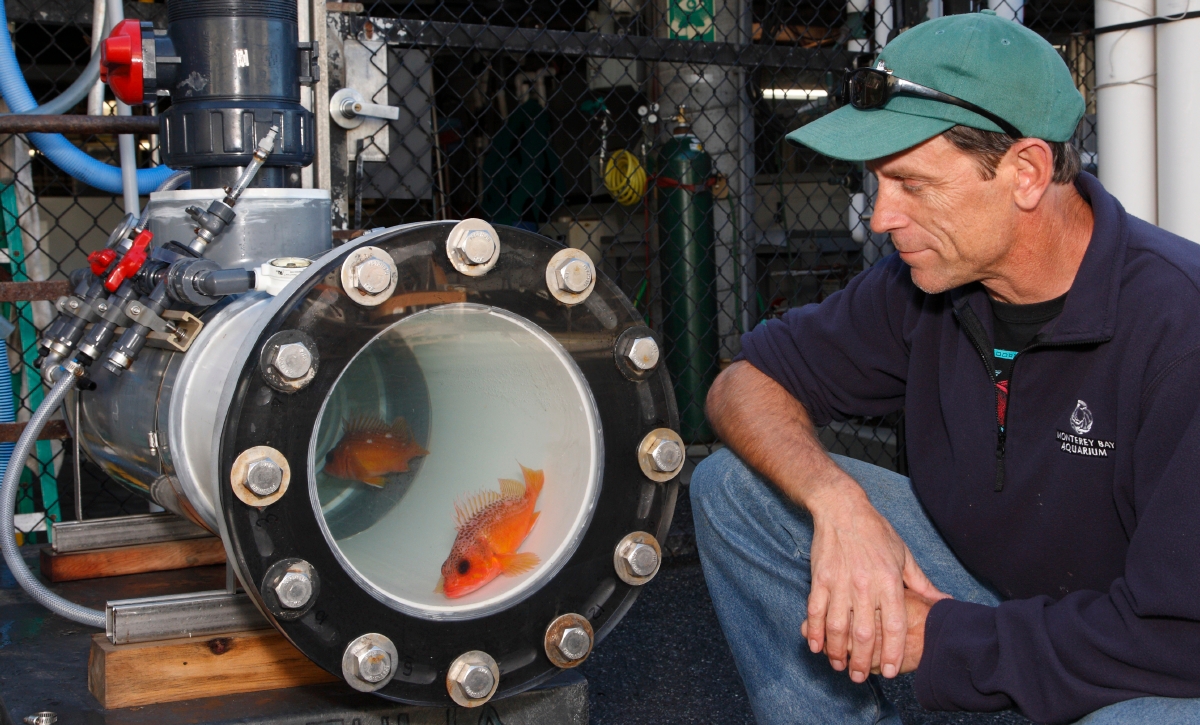
Academy researchers consulted with scientists at the Monterey Bay Aquarium who have successfully collected rock fish from deep in the ocean and raised them in the aquarium. Scientists at the Monterey Bay Aquarium first catch the fish on a line and then place them in a decompression chamber once they reach the surface. The decompression chamber replicates the high pressure of the depth at which the fish were found and then slowly lowers the pressure over time. This allows the fish to acclimate to the lower pressures found at the surface. The scientists discovered that when the rock fish are first brought to the surface, they’re often very bloated and near death, but if they’re immediately placed back into their original high-pressure conditions and slowly decompressed, the fish are able to adjust and do quite well in the aquarium.
This technique works with larger fish, but scientists at the Academy were also interested in collecting smaller fish, and smaller fish are more likely to die from the trauma of the pressure change. They figured their best bet was to design a portable decompression chamber in which they could collect fish on their dives. The device needed to maintain the high pressures of the deep while the fish were being transported to the surface. Once at sea level, the pressure inside the chamber would need to slowly lower in order to give the fish enough time to safely adjust to lower pressures.
When the team began designing the portable decompression chamber, they had to consider a number of constraints. The device needed to be
- small and lightweight, so it could be easily handled by divers.
- sleek, so that nothing could get caught on the diver’s equipment or crack off when lifted onto a boat.
- big enough to hold fish.
- strong enough to be able to reliably maintain high pressures.
- equipped with an apparatus allowing divers to read and adjust the pressure inside the chamber.
- transparent, so the divers could monitor the animals inside the chamber.
- affordable, meaning made from existing materials rather than custom manufactured from scratch.
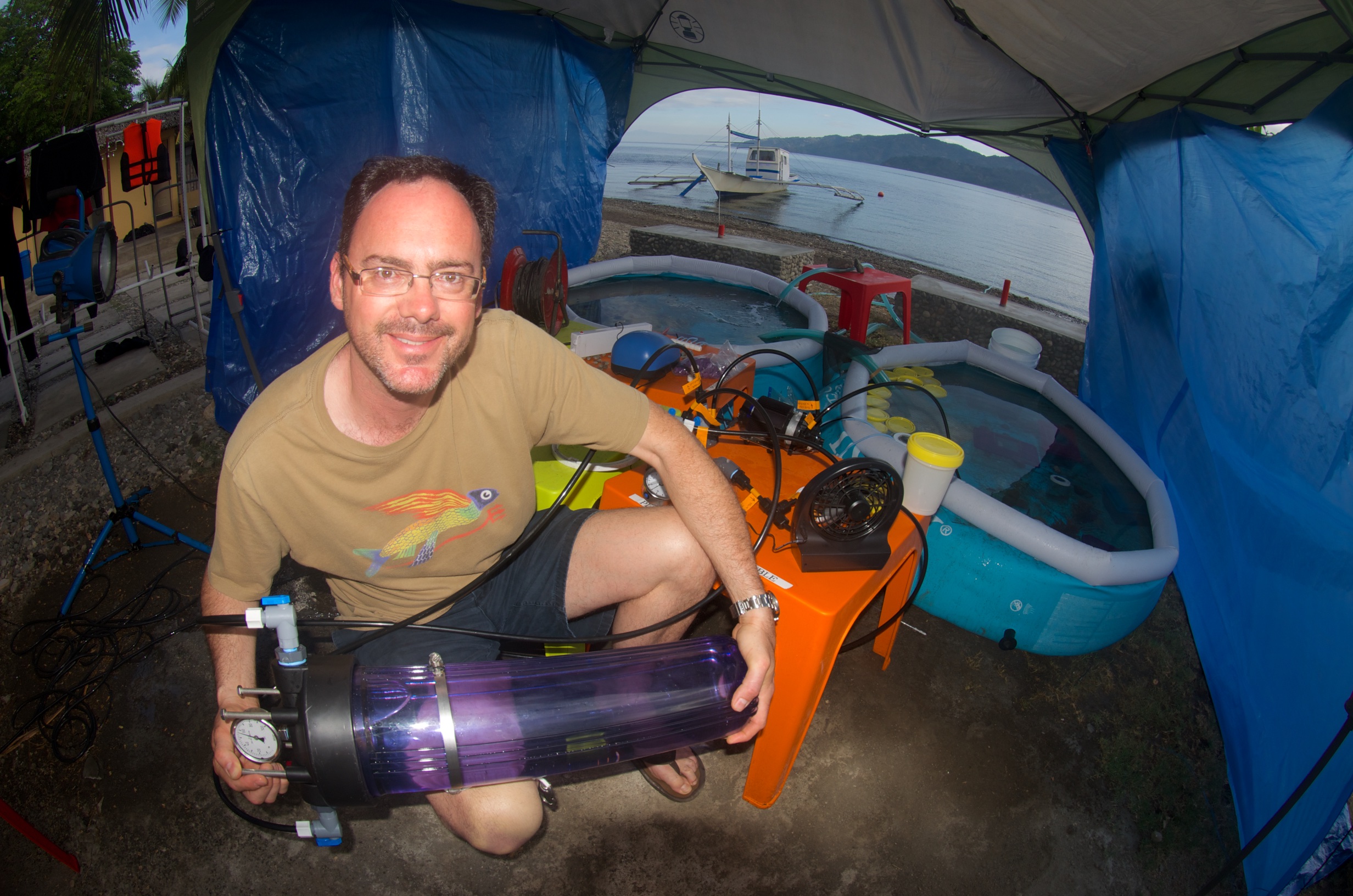
After some tinkering and building, the team came up with a prototype. The scientists took it on a dive to test it out. They found that it kept pressure but was difficult to seal underwater. It also had too many protruding valves. Learning from that experience, the team redesigned the device to make it easier to operate. Using this new device, the scientists have successfully brought back live fish, some of which are on display at the aquarium.

Interview an engineer about a project he or she is working on. What is the problem the engineer is trying to solve? What is the engineering process like? What are the challenges? What are the motivations? Record the interview using an audio or video recorder and create an audio or video piece of three minutes or less and share it here. Don't have a recording device? Summarize the interview in a blog post and share that here. Check out what others have made here.